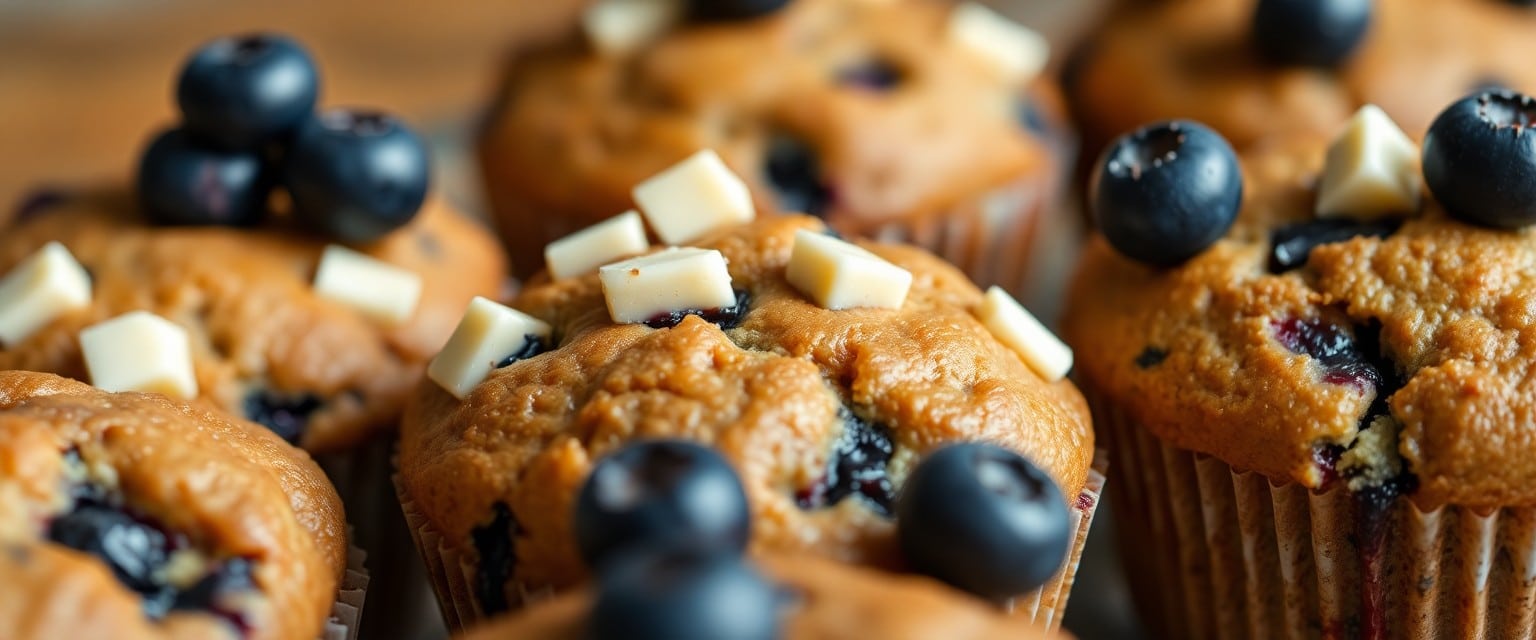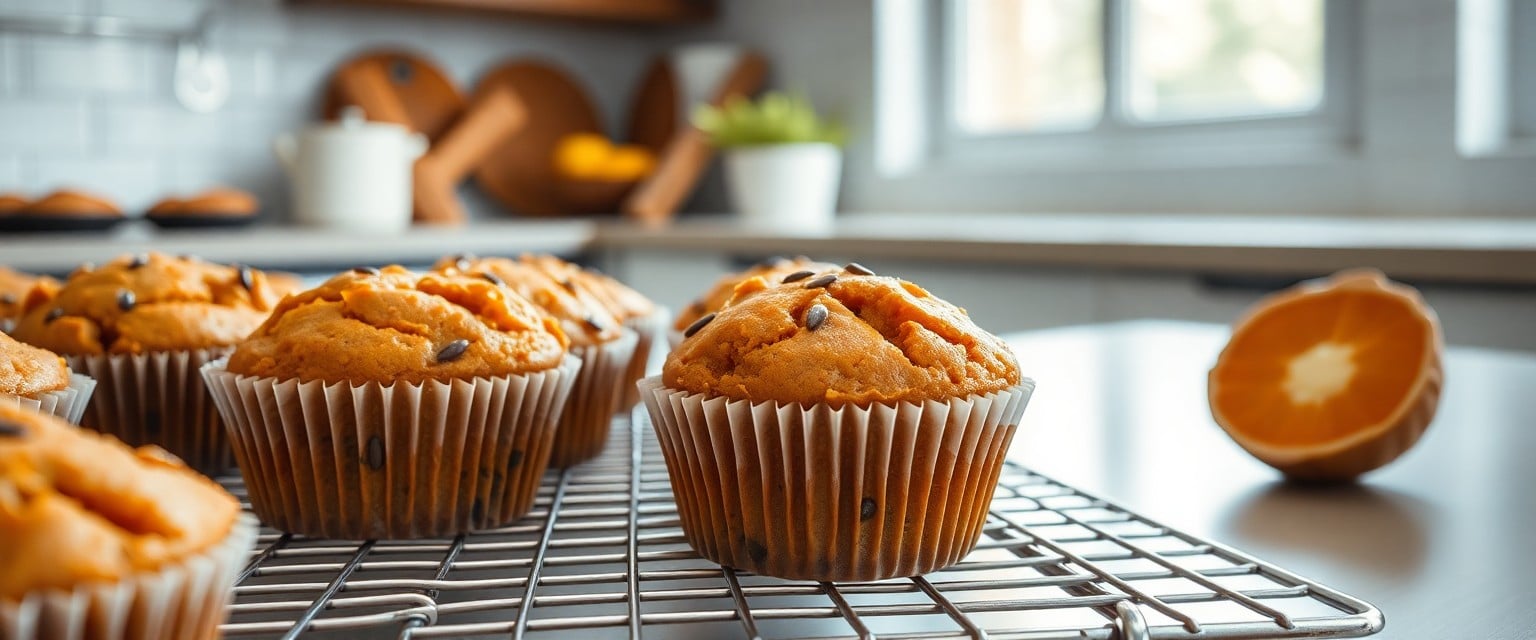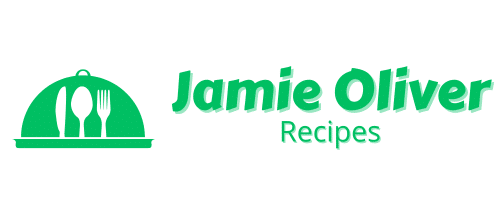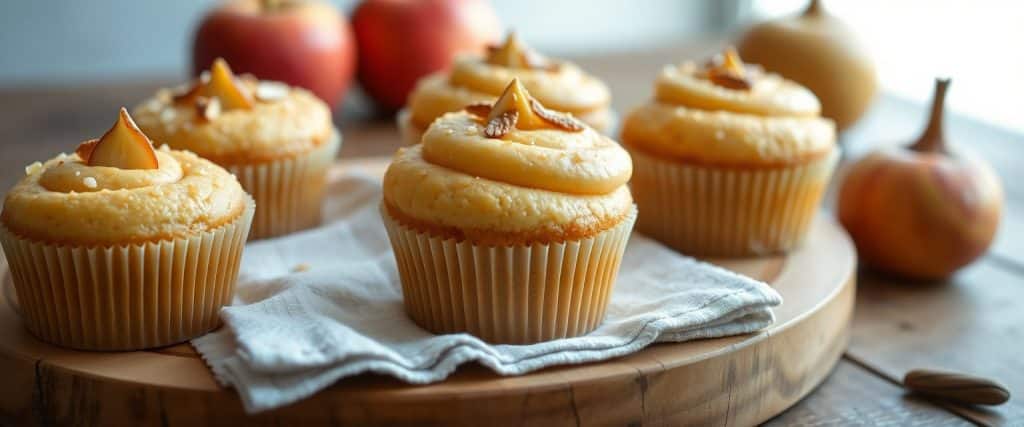You can enjoy indulgent baked treats without gluten by exploring Jamie Oliver gluten-free baking recipes that deliver both flavor and texture. Whether you’re baking muffins, banana bread, chocolate cake, or scones, these recipes use smart ingredient swaps like almond and oat flours to keep your goods moist and tender. With expert tips on structure and moisture retention, you’ll avoid dry results and create delicious desserts safe for those with gluten intolerance or celiac disease. Dive into these allergy-friendly options and transform your baking with confidence and ease.
Baking with Purpose: Embracing Gluten-Free Ingredients
Balancing texture and flavor in gluten-free baking often means thoughtfully choosing the right ingredients. Swapping traditional wheat flour for gluten-free alternatives like almond or oat flour brings natural moisture and nuttiness, elevating your treats beyond simply being allergy-friendly. You’ll find that layering these flours with binders like xanthan gum or psyllium husk helps recreate the structure gluten usually provides, ensuring your muffins, scones, or cakes don’t crumble. This intentional approach allows you to craft indulgent desserts that satisfy both taste buds and dietary needs without ever feeling like a compromise.
Jamie Oliver’s Best Gluten‑Free Baking Recipes
What You’ll Make:
- Gluten‑free chocolate & blueberry muffins
- Apple, almond & cardamom cupcakes
- Savory cottage‑cheese & tomato muffins
Why You’ll Love Them:
- Use trusted gluten‑free flour blends for moist, reliable results.
- Classic flavour profiles: fruit, chocolate, cheese—fridge-friendly!
- Simple mixing methods—ideal for bakers of any skill level.
The Power of Alternative Flours: Almond, Oat, and Beyond
Almond and oat flours take center stage in Jamie Oliver’s gluten-free baking roster, each adding unique textures and flavors. Almond flour offers a rich, buttery crumb perfect for moist banana breads and chocolate cakes, while oat flour brings a mild sweetness and tender crumb ideal for muffins and scones. Combining these with lighter starches like tapioca or arrowroot powder can enhance elasticity and prevent dryness, giving you greater control over your baked goods’ final structure and mouthfeel.
Creating a Flavorful Profile: Sweeteners and Other Enhancements
Natural sweeteners such as honey, maple syrup, or mashed ripe bananas not only boost flavor but also impart moisture, combating the dryness common in gluten-free bakes. Adding elements like vanilla extract, cinnamon, or citrus zest enriches the taste without extra calories. Incorporating dairy or plant-based yogurt can deepen flavor complexity and promote tenderness, leaving your gluten-free muffins or cakes indulgent and satisfyingly soft.

Muffins Reimagined: A Gluten-Free Delight
Transform your baking with gluten-free muffins that capture the soul of Jamie Oliver’s comforting flavors without compromise. Using almond flour or oat flour, you can expect moist, tender crumb and rich taste, balancing natural sweetness and texture. These substitutions bring out nutty undertones and a soft structure, avoiding the dryness often linked with gluten-free baking. Whether fruity, spiced, or chocolatey, your muffins will delight every palate while keeping them gluten-free and indulgent — all inspired by Jamie’s approachable yet sophisticated style.
Jamie’s Signature Flavors: Best Gluten-Free Muffin Recipes
Explore gluten-free muffin recipes that echo Jamie Oliver’s favorite blends—think banana and walnut combinations enhanced by almond flour’s moisture-holding properties or zesty blueberry oat muffins with vibrant texture. Honey, vanilla, and cinnamon often play supporting roles, intensifying natural flavors while avoiding gluten. These recipes prioritize wholesome ingredients, balancing sweetness with a tender crumb, so your muffins stay soft and flavorful with every bite, staying true to Jamie’s passion for fresh, simple, and allergy-conscious baking.
Consistency is Key: Tips for Moist and Flavorful Muffins
Maintaining moisture and structure in gluten-free muffins requires careful ingredient swaps and technique. Using a blend of almond flour for richness and oat flour for lightness helps create that perfect, crumbly yet tender texture. Incorporating ingredients like Greek yogurt or applesauce adds moisture without weighing them down. Be mindful of over-mixing, which can toughen your batter, and avoid over-baking to prevent dryness. Any adjustment in baking temperature or time should be made gradually, ensuring your muffins remain indulgently soft and full of flavor.
Additionally, getting the ideal moistness often relies on balancing leavening agents such as baking powder and baking soda, which contribute to the rise and texture. Combining different gluten-free flours can enhance the crumb and prevent gritty textures, while natural binders like flaxseed or chia gel improve elasticity and structure. Gentle folding techniques preserve air pockets, keeping muffins fluffy. Any variation to these tips can make a noticeable difference in the final product, making your gluten-free muffins truly exceptional.
- Gluten-free muffins: Replace wheat flour with almond and oat flours for texture and flavor.
- Moisture retention: Use Greek yogurt or applesauce to keep muffins tender and moist.
- Leavening balance: Adjust baking powder and soda for proper rise without dryness.
- Baking technique: Avoid over-mixing and over-baking to prevent tough or dry muffins.
- Natural binders: Incorporate flaxseed or chia gel for improved structure and crumb.
- Air incorporation: Fold batter gently to maintain fluffiness and light texture.
Any small change in flour blends or moisture can transform your gluten-free muffins from dry to delightful, so experimenting within these guidelines elevates your baking results.
Indulgence in Every Slice: Gluten-Free Banana Bread
This gluten-free banana bread brings Jamie Oliver’s rustic charm to your allergy-friendly kitchen, delivering a moist, tender crumb packed with warm banana flavor. Using almond and oat flours instead of wheat keeps each slice dense yet light, while ripe bananas and a touch of honey add natural sweetness without overwhelming. The subtle nutty notes from almond flour and the slight chew from oat flour create a satisfying texture that feels truly indulgent — perfect for a comforting breakfast or guilt-free dessert.
The Best Swaps for Texture and Taste
A blend of almond flour and oat flour unlocks the best texture in your gluten-free banana bread, with almond flour providing richness and moisture, and oat flour contributing body and slight chew. Incorporating a tablespoon of ground flaxseed helps mimic gluten’s binding effect, improving structure without sacrificing tenderness. Swapping regular butter for melted coconut oil adds a subtle sweetness and keeps the crumb soft, while natural sweeteners like maple syrup or honey enhance flavor and moisture levels.
Mastering the Balance: Keeping it Moist without Gluten
Gluten-free banana bread can dry out quickly, but moisture retention improves dramatically by including ripe bananas and a balance of fats like coconut oil or olive oil. Adding a spoonful of Greek yogurt or applesauce also keeps the crumb tender while enhancing flavor complexity. Don’t overlook the role of eggs—they act as crucial binders and moisture carriers, so adjust their number carefully. Baking just until a toothpick comes out clean, typically around 45 minutes at 175°C (350°F), prevents over-baking and ensures each slice stays delectably soft.

Decadence Redefined: Chocolate Cake Without Compromise
Create a chocolate cake that satisfies every craving without gluten by reimagining Jamie Oliver’s classic recipe with smart swaps. Using almond and oat flours brings a tender crumb and deep flavor, while dark cocoa and high-quality chocolate keep the richness front and center. The result is a moist, indulgent cake that feels luxurious—never dry or dense—perfect for anyone needing to skip gluten but still indulge fully.
Rich Ingredients for Rich Flavors: What Works Best
Almond flour stands out for its naturally buttery profile, adding depth and moistness to chocolate cake, while oat flour contributes subtle sweetness and body. Pairing these with ingredients like coconut oil or Greek yogurt enhances moisture without overpowering flavors. Infusing the batter with espresso or vanilla extract elevates the chocolate notes, delivering a complex, satisfying taste that doesn’t rely on gluten to shine.
Baking Essentials: Ensuring Structure and Moisture
Combining xanthan gum or guar gum with your gluten-free flours mimics the elasticity gluten provides, helping the cake hold together and rise evenly. Incorporating moisture-retaining ingredients like applesauce or buttermilk prevents dryness and keeps the crumb soft. Precise oven temperature and timing also make a big difference—overbaking can quickly dry out gluten-free cakes, so watch closely and test with a toothpick for perfect doneness.
Using gums such as xanthan or guar in quantities around ¼ to ½ teaspoon per cup of flour adds vital structure, binding the ingredients seamlessly. Balancing this with wet ingredients is key—too little moisture leads to crumbling; too much, to a heavy texture. In one Jamie Oliver-inspired adaptation, swapping half the fat for Greek yogurt increased tenderness while keeping richness intact. Monitoring baking times within the range of 25-30 minutes at 175°C (350°F) and starting checks about five minutes early helps you avoid dry edges. These targeted techniques ensure a chocolate cake that’s indulgent, reliably rise-worthy, and soft throughout.
Scone Perfection: Elevating Your Tea Time
Gluten-free scones offer a delightful way to enjoy classic British tea treats without compromising on flavor or texture. Swapping traditional wheat flour for almond or oat flour adds a nutty depth and moist crumb, while incorporating ingredients like xanthan gum enhances structure. Following Jamie Oliver’s approach, you can infuse scones with fresh fruit or zesty citrus for an indulgent feel. With careful handling and balanced hydration, your scones will be tender yet sturdy, offering a perfect complement to clotted cream and jam at any cozy afternoon gathering.
Gluten-Free Variations of Classic Scone Recipes
Replacing wheat flour with combinations of almond flour, oat flour, and a touch of gluten-free baking powder can mimic the delicate crumb of classic scones. Using ingredients like buttermilk or yogurt helps retain moisture, counteracting dryness common in gluten-free baking. Adding vanilla extract or citrus zest enhances aroma without weighing down the dough. Jamie Oliver’s gluten-free adaptations remain indulgent yet safe for sensitive diets, proving that allergy-friendly doesn’t mean flavor compromises.
Textural Tips: How to Keep Them Fluffy and Light
Light, fluffy scones rely on gentle mixing and the right balance of leavening agents like baking powder paired with a pinch of baking soda. Incorporating egg whites or using ingredients like yogurt keeps the texture moist while supporting rise. Avoid overworking the dough to prevent toughness, and chilling before baking helps maintain shape and crumb structure. Perceiving the subtle signals of dough readiness guides your scones from dense to delightfully airy.
Achieving your perfect gluten-free scone involves mastering a few specific techniques to bring out the ideal fluffiness and light bite. Use a sifted blend of almond and oat flours in roughly a 2:1 ratio to provide both structure and tenderness. Incorporate xanthan gum at about 1/4 teaspoon per cup of flour to mimic gluten’s elasticity. Whip egg whites separately and fold gently for extra lift. Keep your ingredients cold—especially the fat—and handle the dough minimally to avoid a dense crumb. Baking soda teamed with baking powder creates an ideal rise, especially when paired with acidic elements like buttermilk. Perceiving these nuances will elevate your gluten-free scones to irresistible perfection.
- Almond flour and oat flour mix improves texture and flavor
- Adding xanthan gum enhances dough elasticity
- Separately whipped egg whites contribute to fluffiness
- Cold fats and minimal handling prevent toughness
- Combination of baking powder and baking soda enables optimal rise
Summing up Jamie Oliver’s Best Gluten-Free Baking Recipes (Cakes, Muffins & More)
Following this guide, you’re well-equipped to recreate Jamie Oliver gluten-free baking recipes that deliver on both flavor and texture. By incorporating ingredient swaps like almond and oat flours, and applying helpful tips for moisture and structure, your gluten-free cakes, muffins, banana bread, and scones can be indulgent and allergy-friendly. These recipes prove that gluten intolerance or celiac disease doesn’t mean missing out on delicious homemade treats—you can enjoy every bite with confidence and ease.
Frequently Asked Questions
How do I replace gluten in baking?
Use gluten-free flour blends (rice, almond, oat) plus a binder like xanthan or psyllium gum for structure and elasticity.
Can gluten-free baked goods taste as good as regular?
Yes! When using mixed flours, eggs, and good binding agents, gluten-free bakes can be moist, flavorful, and satisfying.
Do I need to change baking times?
Typically yes—gluten-free batters bake slower and need longer to avoid a gummy center, and rest time helps hydrate flours.
What are Jamie Oliver’s top gluten‑free bakes?
His favorites include chocolate & blueberry muffins, apple & almond cupcakes, cottage cheese muffins, and sweet potato muffins.
Is gluten-free baking healthier?
Not inherently—health depends on ingredients and nutrition. Gluten-free versions may have more sugar or fat to compensate for texture.

